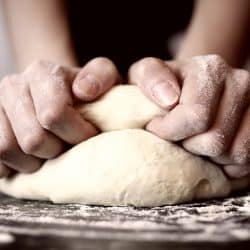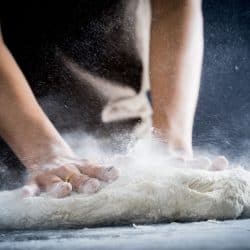A pizza dough that rises during the baking process can give the crust texture. This process also helps the dish develop flavors. But what can you do if the pizza dough doesn’t rise? We researched the answer to this predicament, and here’s what we found.
Different options are available if a pizza dough fails to rise quickly or doesn’t expand at all. Some of the possible solutions you can try are:
- Increase the heat
- Use the correct mixture ratio
- Apply the proper kneading technique
- Add yeast
These methods may seem relatively straightforward. But the dough might still not rise if you don’t apply these procedures correctly. Continue reading as we talk about these solutions in greater detail. We’ll also tackle some helpful tips on how to make pizza dough rise fast.

Why Is My Pizza Dough Rising?
Pizza dough rises because of yeast fermentation. It’s the process of the dough trying to release sugars from within. Bakers usually add a catalyst, such as water, to the dough mixture to help make the dough expand when placed in the oven. This procedure generally ends at about 140 degrees Fahrenheit during baking.
Keep in mind that pizza dough doesn’t need to rise every time, depending on the recipe. Members of the cooking community suggest looking at the demands of certain recipes before attempting to make pizza dough expand.
Take note that risen pizza dough will look and taste different compared to a flat crust. However, a thin crust can still work for specific dishes.
What Do You Do If Pizza Dough Doesn’t Rise?
Different solutions are available if a pizza dough doesn’t rise. Some techniques you can try are:
Increase the Heat
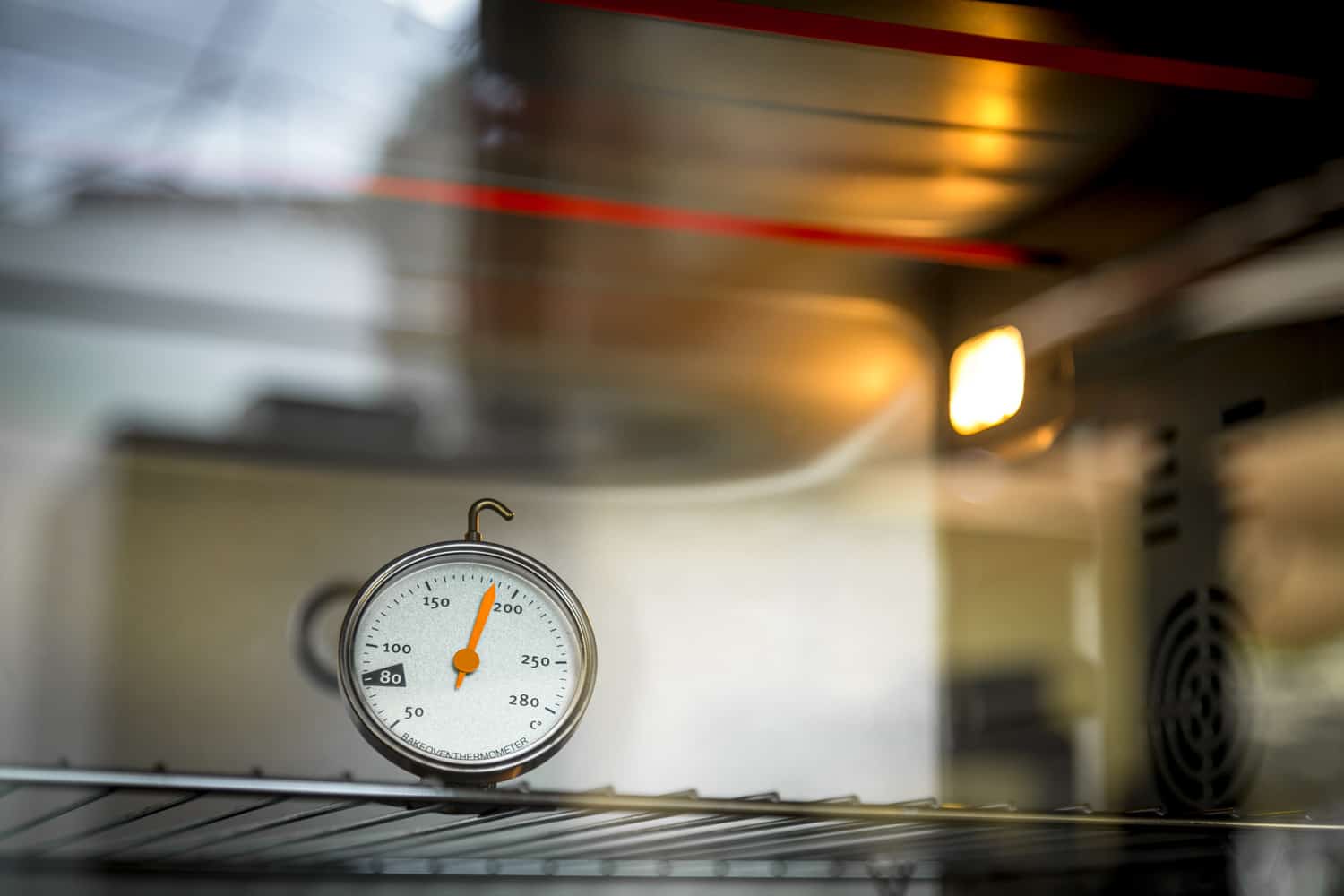
Yeast often loves a warm and moist environment. So adding more water to the mixture and increasing the heat of the oven to about 80 to 90 degrees Fahrenheit can help the dough rise.
If you don’t want to add water to the dough directly, you can also fill a baking pan with water. Then, place it at the lowest rack in the oven with the dough at the holder above it.
Also, you can add a cup or glass of water with fairly small pizza dough in the microwave. This particular technique can be good for making small, snack-sized pizzas that are generally good for one person to eat.
Use the Correct Mixture Ratio
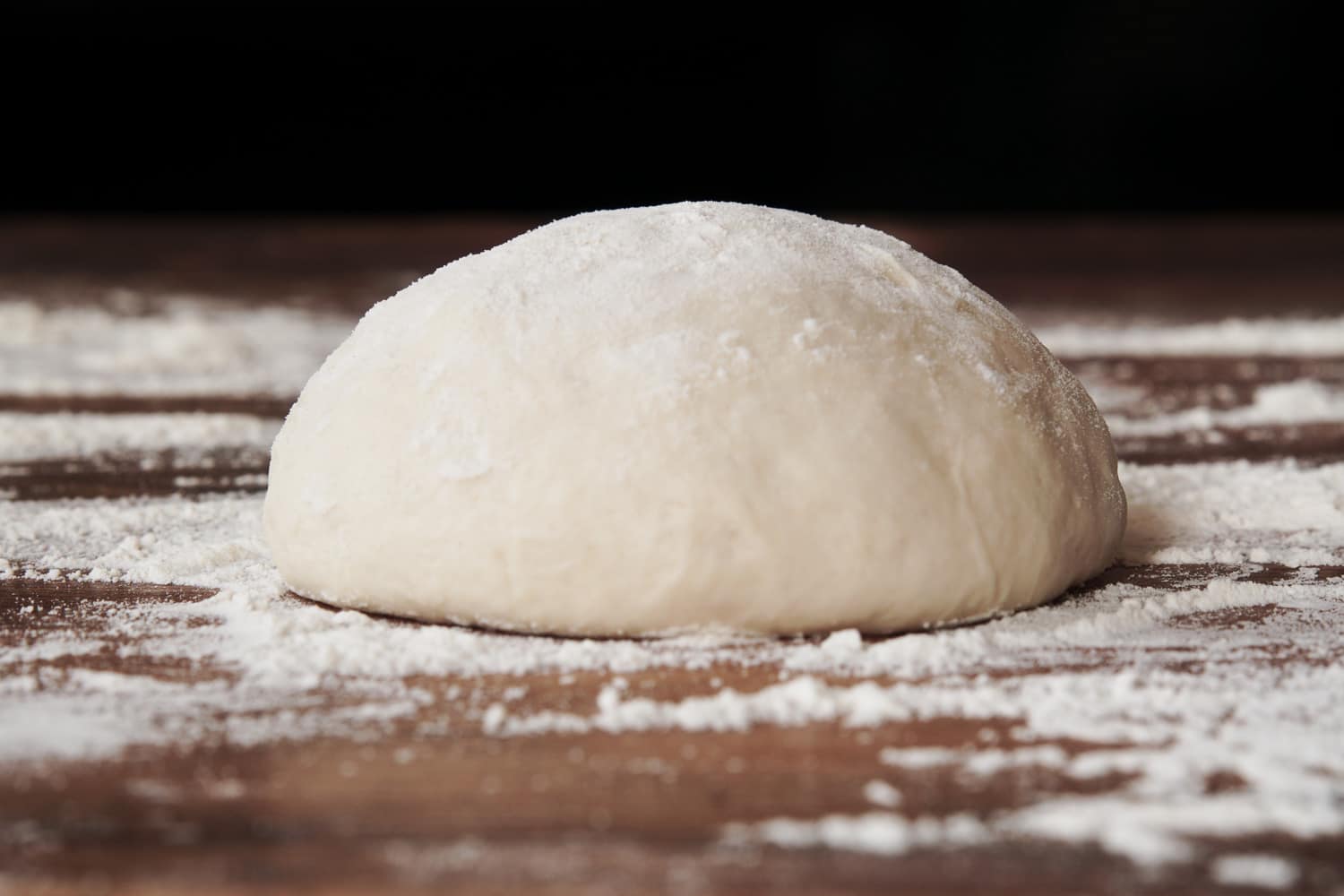
An incorrect flour to water ratio might be the reason why your pizza dough isn’t rising. A good mixture typically has 60% flour with 40% liquid. Also, kneading the dough properly is necessary to activate the yeast in the mixture.
But the yeast may not still activate, and the dough fails to rise even after ensuring that the mixture has the correct ratio. If so, an underlying issue might be present. For example, you might not be using quality flour. Also, check the expiry date of your ingredients to verify that they’re still usable.
You can also read our post on how much yeast do you need for pizza dough to learn more about this topic.
Check out this product on Amazon.
Apply the Proper Kneading Technique
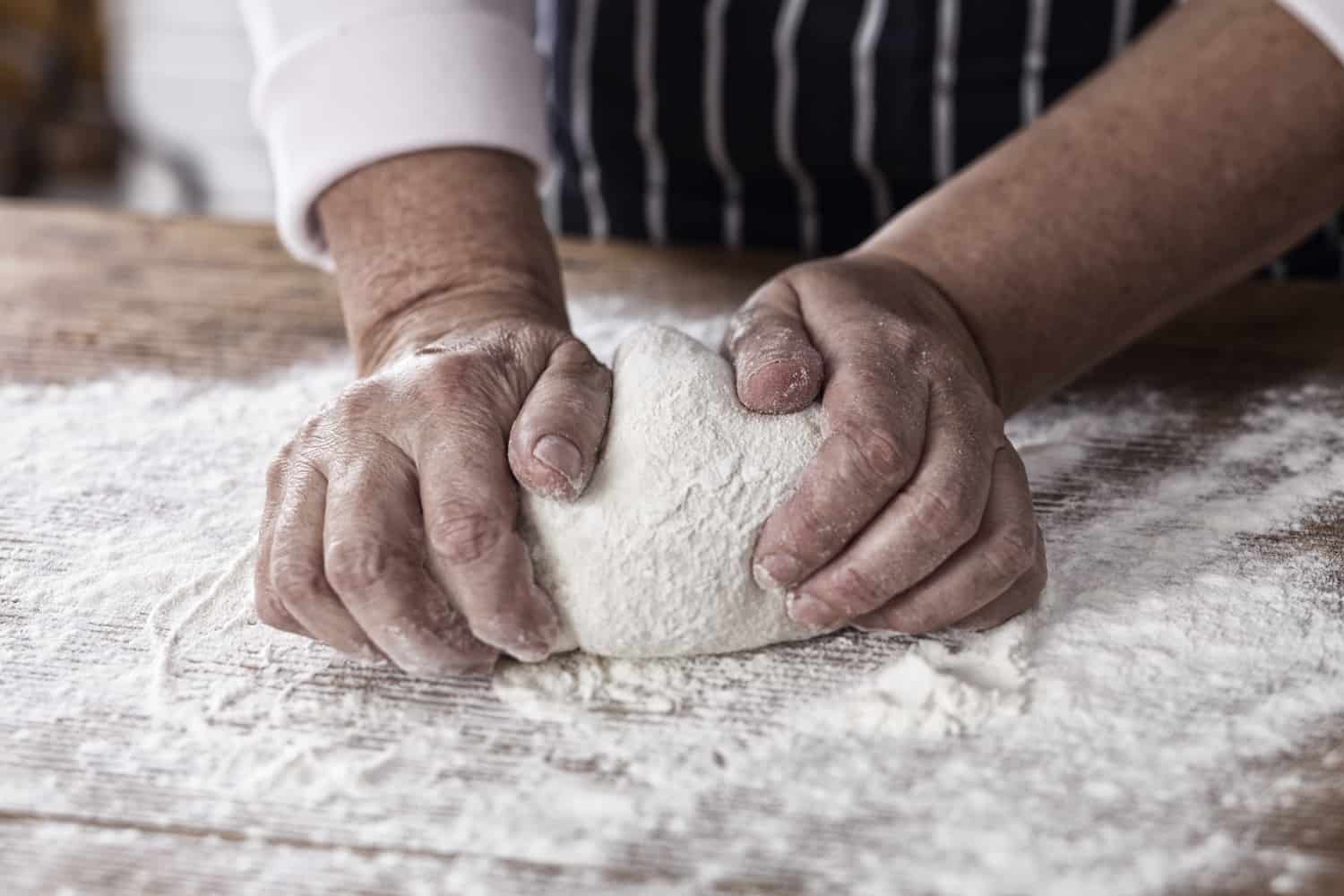
Insufficient kneading may not allow the yeast to distribute and activate in the dough, causing the dish to fail to rise. On the other hand, kneading too much can make the dough tough, which can also lead to similarly unsatisfying results.
The quick guide below will help you use the correct kneading technique for your pizza dough:
Step-by-Step Guide
- Dust your hands with flour.
- Sprinkle flour in the working area.
- Place the dough on the flour-covered surface.
- Start kneading by pushing the dough once with the heels of your hands.
- Give the dough a quarter turn and fold it in half.
- Repeat steps 4 and 5 for about four minutes or until the dough reaches a smooth and elastic consistency.
Don’t be afraid to add a small amount of flour to the mixture if the dough feels sticky during the kneading process. You can also watch the video below to see the steps mentioned above in action:
Gain additional insight about the correct length of time in kneading pizza dough to help ensure you mold the dish properly.
Add Yeast
Insufficient yeast can also be one of the main issues why your pizza dough isn’t rising. But it doesn’t mean that you should add more yeast into the mixture. If you do that, the dish might not come out the way you want it to appear and taste.
Instead, open a new yeast pack and follow these steps:
Step-by-Step Guide
- Mix one teaspoon of yeast in a cup of warm water. Then, add a tablespoon of sugar to the mixture.
- Wait for 10 minutes or until you see about a half-inch to one inch of foam.
If the steps above didn't work, you might need to add more yeast to the mixture. Repeat this process until the dough expands in the oven.
Check out this product on Amazon.
How To Make Pizza Dough Rise Faster?
Certain solutions are available for pizza dough to rise faster than the typical time for it to expand. The following methods can also help combat some complications (e.g., cold weather) that may inhibit the yeast from activating:
Use the Slow Cooker
Despite this appliance having ‘slow’ in its name, you can use it to increase the speed at which pizza dough rises. Follow these steps if you want to use this procedure:
Step-by-Step Guide
- Fill the slow cooker’s reservoir with water until it’s half full.
- Set the appliance at a low temperature.
- Place the cooker’s lid on the appliance but put it upside down. Then, place a towel over it.
- Grease a bowl with your preferred cooking oil and put the pizza dough in it.
- Cover the bowl with plastic wrap.
- Place the grease-covered bowl and the towel in the slow cooker.
Check out this slow cooker on Amazon.
Place the Dough Near the Oven
You can put the pizza dough near the oven but not directly on top of it after the mixture finishes its time in the appliance. That way, the residual heat from the oven can help make the dough proof fast. Don’t forget to cover the pizza dough container to prevent dirt or dust from landing on it.
Check out these elastic food storage covers on Amazon.
You can also watch the short clip below to gain additional insight on hastening dough proofing:
What Happens If You Don't Let Pizza Dough Rise Enough?
It’s still possible to make pizza crust from dough that didn’t rise enough. But the dough might come out flat with a lack of flavor. Ideally, you need to make pizza dough rise at least twice for it to have sufficient thickness with the right flavor.
What To Do With Failed Pizza Dough?
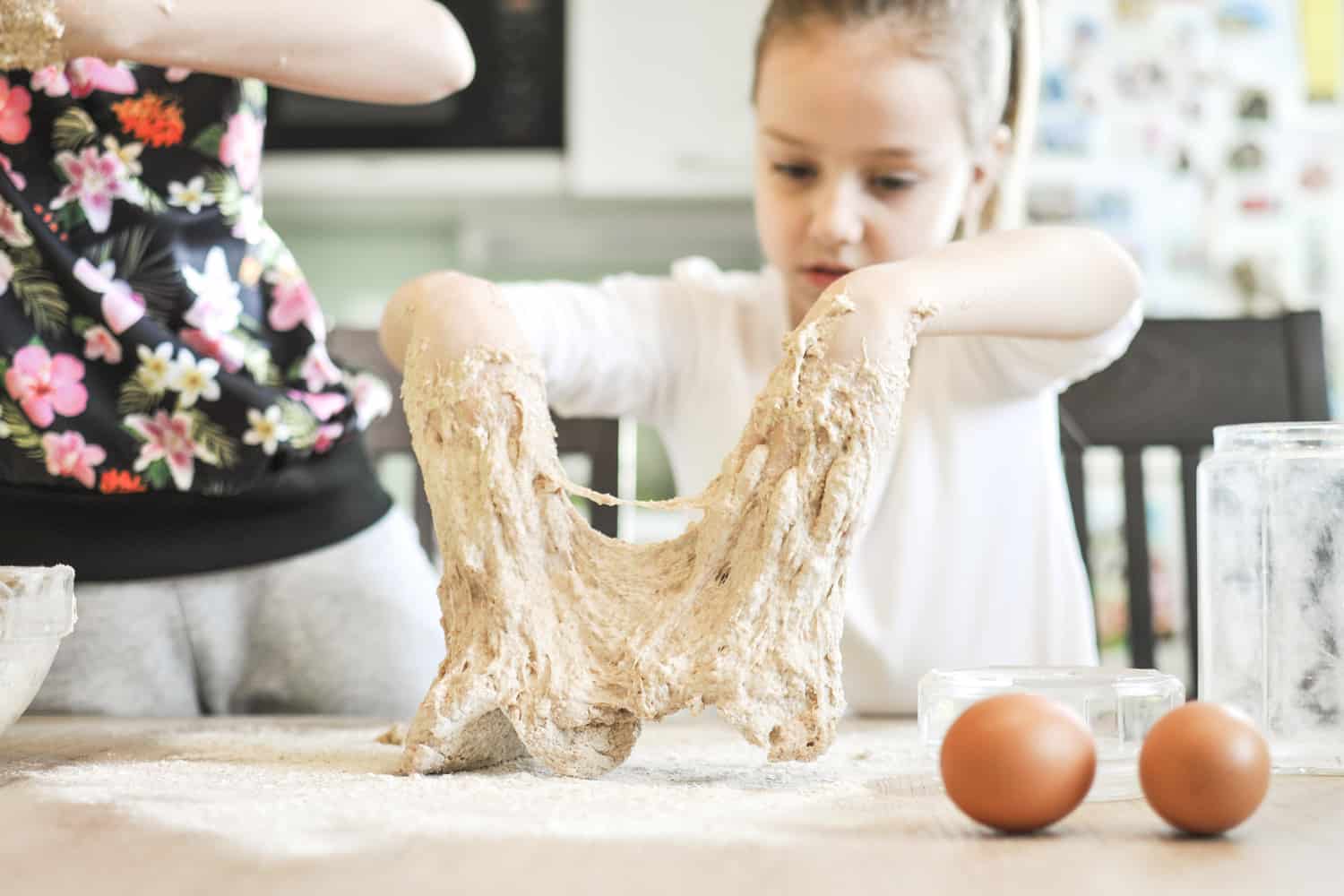
You can still use pizza dough that failed to rise, albeit for another dish. Some of these options are:
Sponge Bread
Purchase fresh yeast and mix it with the failed dough to create a small ‘sponge.’ Use about one-third of the flour that didn’t rise with the new yeast. Then, place it on a clean surface in an area with either room or warm temperature for the dough to rise slightly.
Once satisfied with the results, cut the dough into small pieces. Leave the dough again overnight and bake it the next day. If done correctly, you should have small pieces of bread you can use with other dishes, such as salads or soups.
Flatbreads
Follow these steps to make flatbreads out of your failed pizza dough:
Step-by-Step Guide
- Cut the dough into balls that resemble the size of walnuts.
- Use a rolling pin to flatten the balls into circles of about six inches in diameter.
- Apply a liberal amount of flour on the balls.
- Pre-heat the oven and bake the balls one at a time.
- Take out each ball after about 4 to 5 minutes of baking time.
- Repeat steps 4 to 5 until you bake all the balls you prepared.
Another option is to use a basting brush to spread a beaten egg on the dough rounds. Then, sprinkle coarse salt and sesame seeds on them. Place the balls in the oven at 400 degrees Fahrenheit and wait until they turn golden brown, which should be about 10 minutes.
Check out this basting brush on Amazon.
Final Words
Pizza enthusiasts may use solutions like increasing the heat or adding more yeast to their doughs if these mixtures don't seem to rise. Certain techniques are also available to make the dough rise and proof faster than usual. But make sure to follow the correct steps to avoid wasting food.






